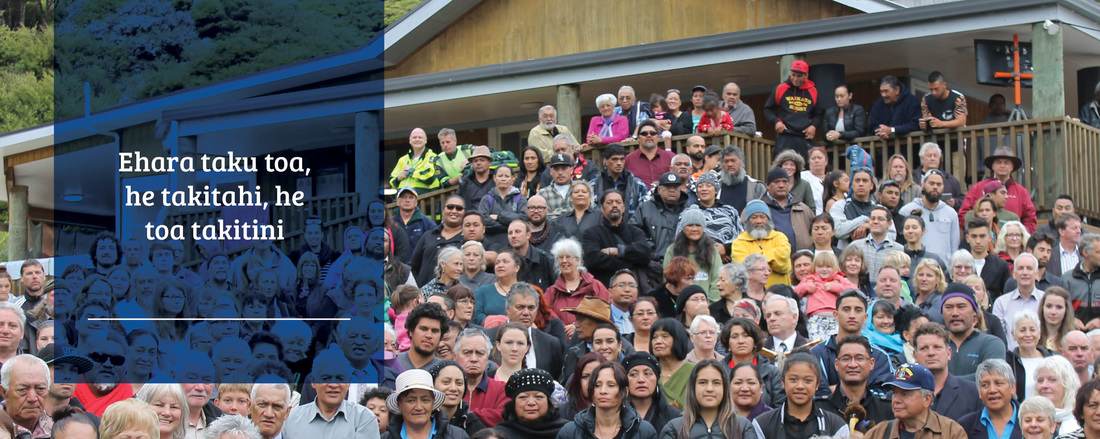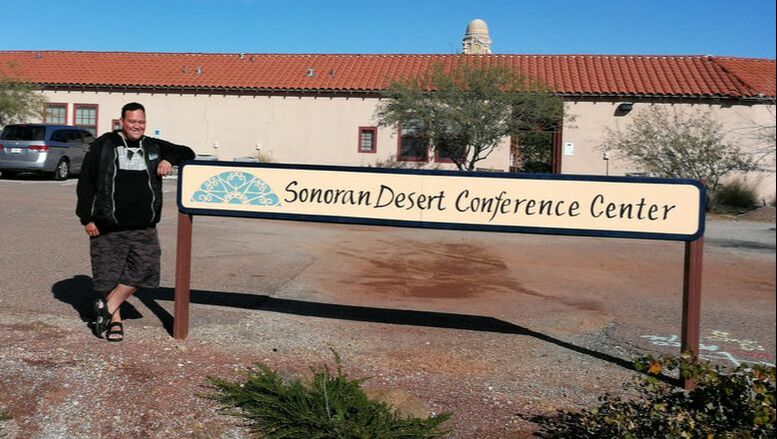
I enjoyed Emily Siegel’s presentation which provided background information about the Sonoran Desert Inn Conference Centre and its parent company, the International Sonoran Desert Alliance, which is a non-profitable organisation that supports local artists in their works. The Curley School, where the Sonoran Desert Inn Conference Center is situated was the preferred school during the Copper Mining industrial revolution, and the area was home to over 10,000 people from 1860s – 1984.
On the first night of my stay I was introduced to AmeriCorps NCCC, a young group of volunteers aged 18 – 24 years old, from all over the United States of America volunteering their time and efforts helping Ajo Sustainable Agriculture Program, with Sterling Johnson and Nina Sajovec at the helm.
Within the first few days of the residency I was contacted by Jessica Tyson, a reporter from Māori Television, who wanted to interview me on how the residency was going and how it came to be.
This interview can be read and viewed by visiting:
https://www.maoritelevision.com/news/regional/strengthening-ties-mahi-raranga
During my two weeks in Ajo I was able to meet and network with locals and indigenous artists. I also visited with a friend, Terrol Dew Johnson, who I have not seen for 14 years. Terrol runs the Ajo Famers Market and Kitchen Store – Desert Rain café from Friday to Sunday evenings. I met Terrol in January 2005 in Hastings, Aotearoa – New Zealand at the Toi Māori Festival and Te Atinga gathering.
Later that year Terrol invited a contingency of weavers from Aotearoa – New Zealand to the 10th Annual Native Basketry and Foods Festival hosted by TOCO at the Heard Museum in Phoenix, Arizona in December 2005. I am thankful for the necklace Terrol gave me during my visit with him in Ajo and
have shared the story of the Tohono O’odham Nation symbol – ‘Man in the Maze’ which is within the necklace.
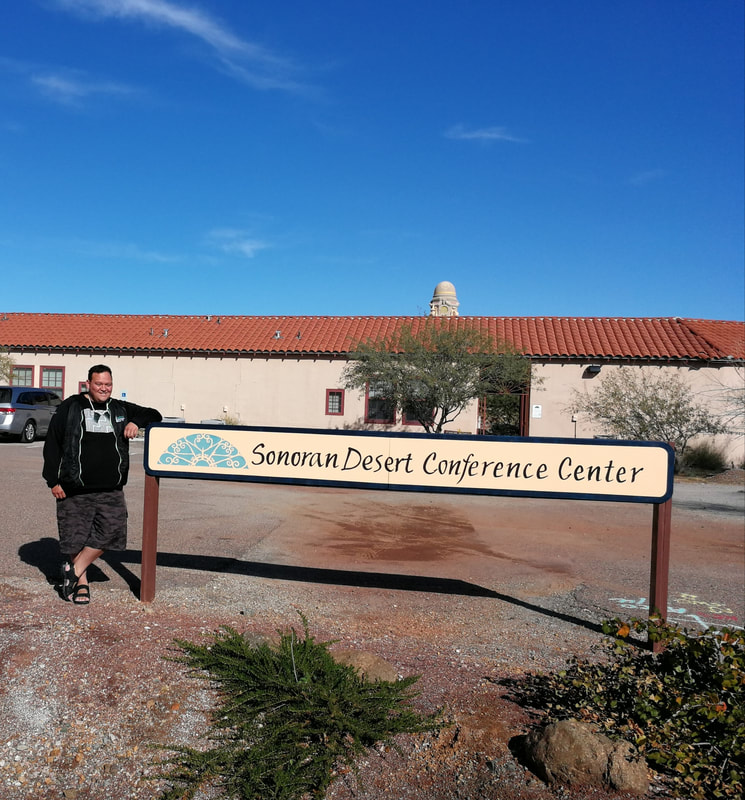
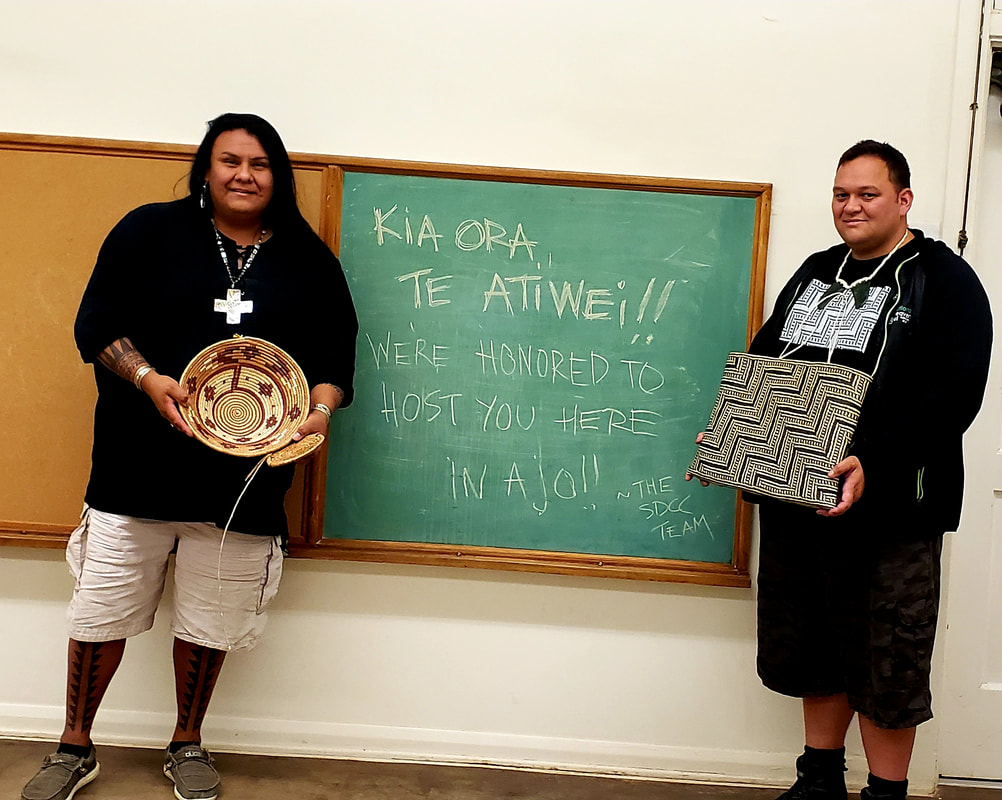
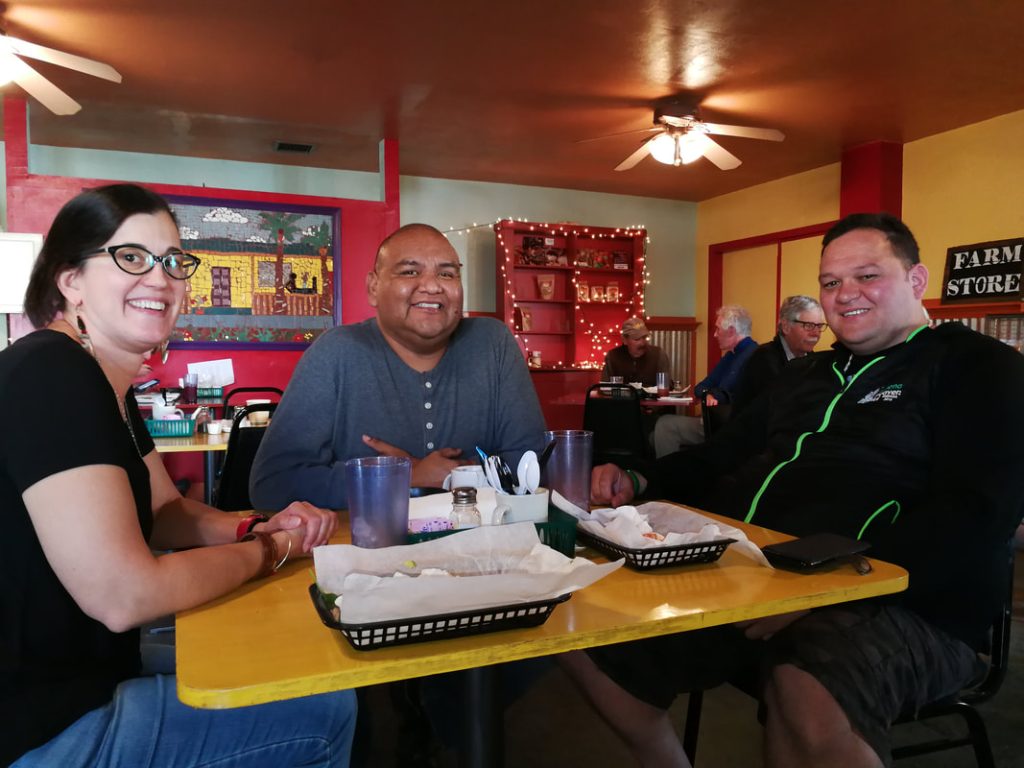
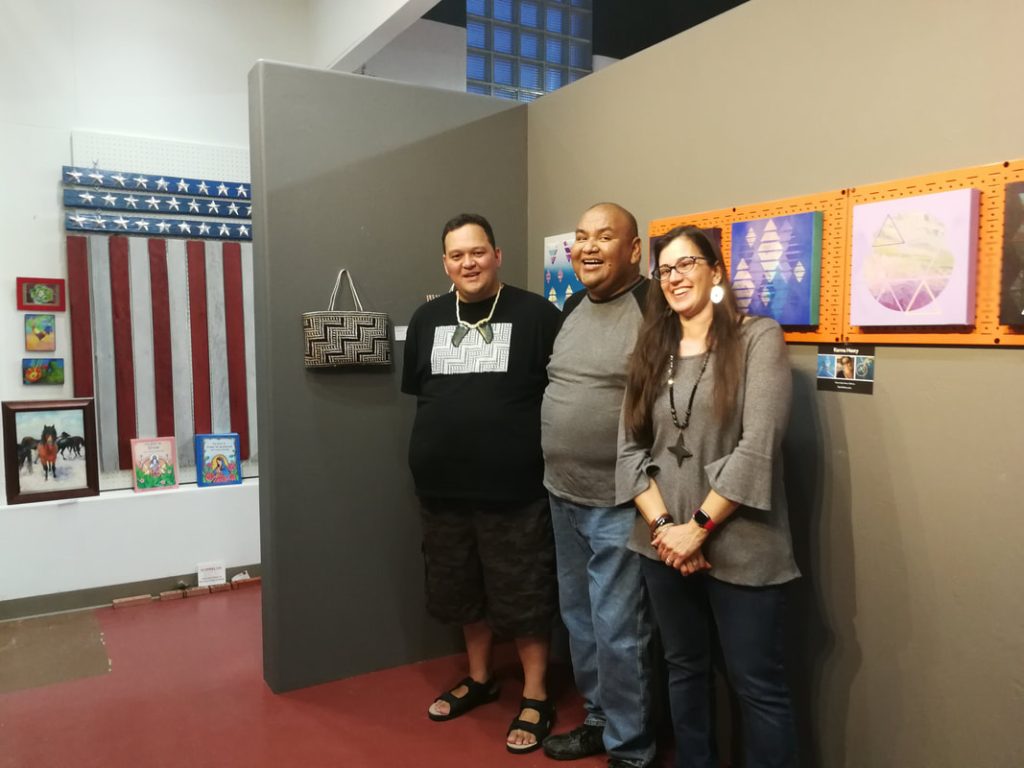
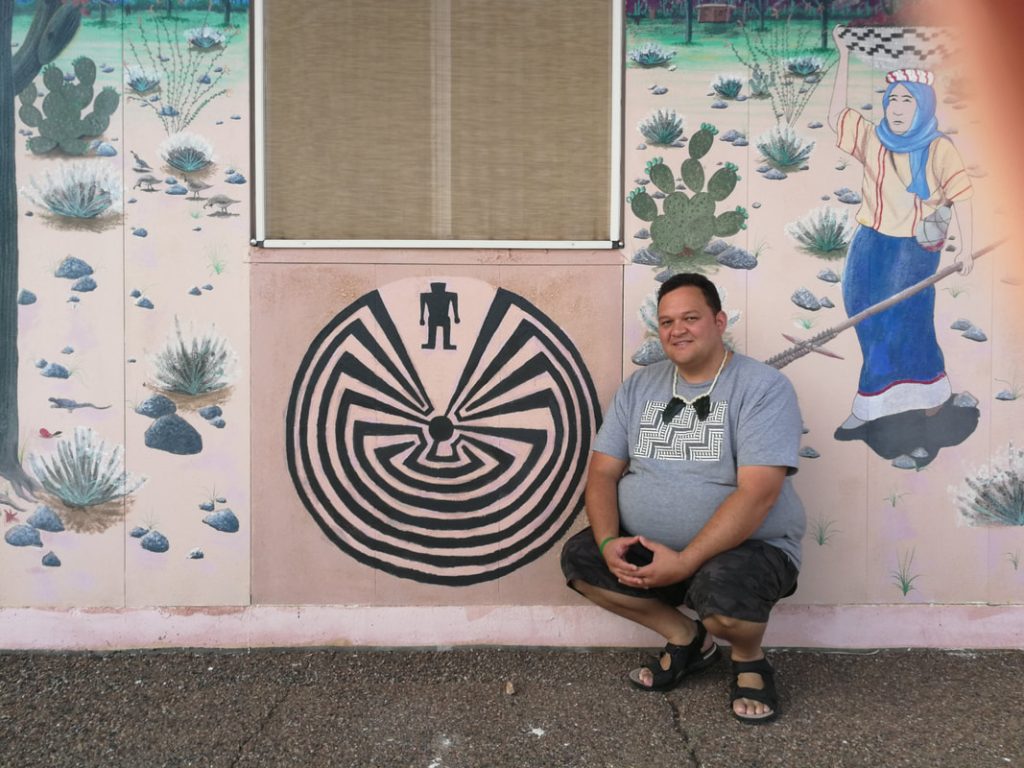
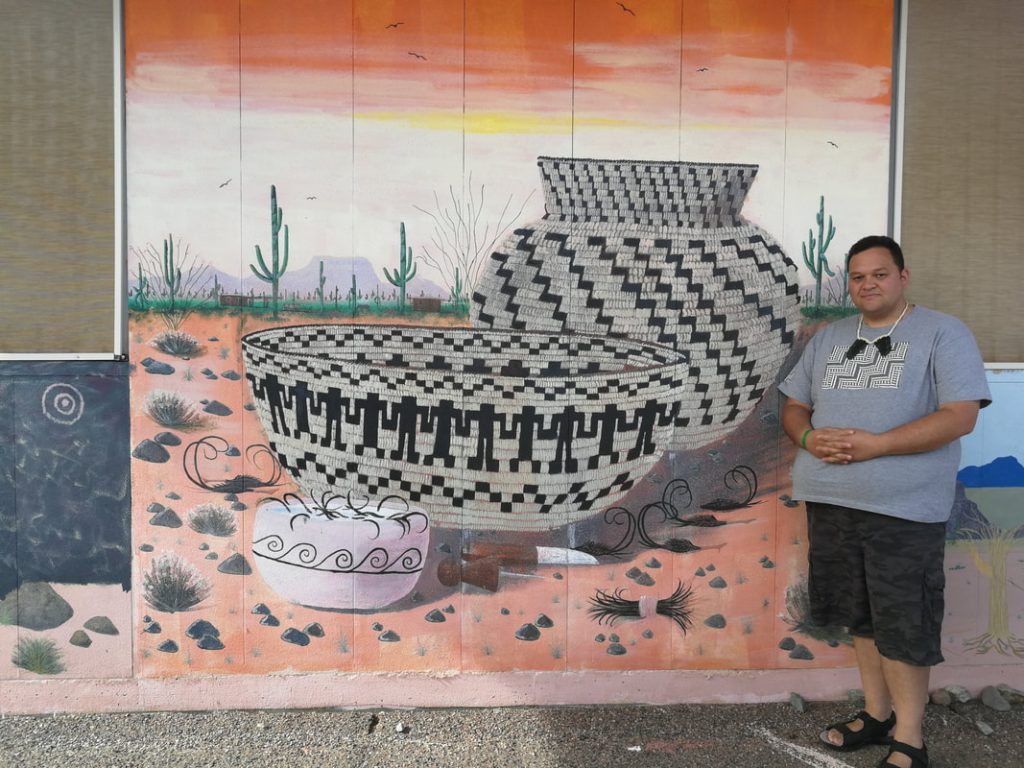
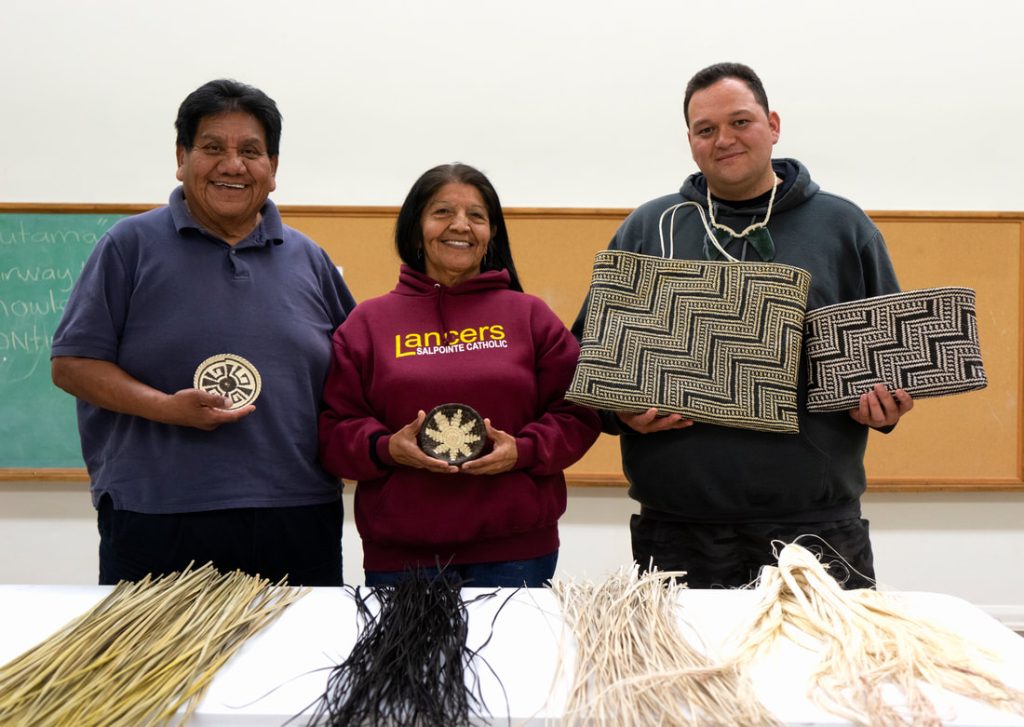
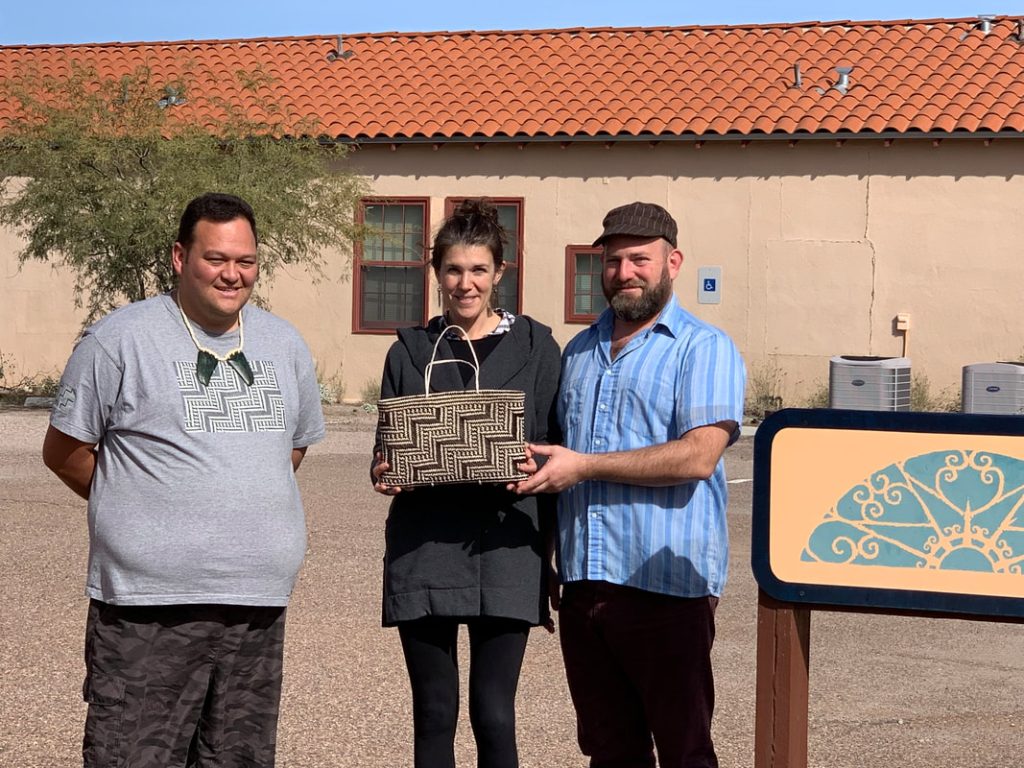
explained the rain cloud within the necklace and its symbolic significance. I also see the Poutama Ahurewa (two-step) pattern ascending sky wards on either side within the necklace which Shelden aligned to their indigenous mountain design. The parallels between our cultural symbolism was extremely fascinating. I am truly grateful for the taonga. Discussions were commenced and I have hopes for further cultural exchange with Shelden and his colleagues in the future.
My main goal during the residency was to weave a Kete Whakairo (Pattern Basket) for my community contribution to the Sonoran Desert Inn Conference Center. My pattern of choice was Poutama (stairway to heaven). This kete whakairo was crafted using kiekie, coloured black and natural.
On one of my walks back from The Plaza I noticed a number of murals painted on the back walls at the Sonoran Desert Inn Conference Center showing the ‘Man in the Maze’, the symbolic design of the Tohono O’odham Nation and a basket with the step pattern similar to Poutama, giving me a sense of connectedness through local art. Myself, Karma Henry and Charlotte Faith Johnston traveled to the copper mine site which is now a tourist attraction, but the history still remains. At the base of the mine lays a green coloured pool of toxic minerals that is approximately 100 meters deep. It was here that the meaning behind the word Ajo came to light as (red paint). Native Indians would source this pigment from this site long ago. What was also interesting to learn about Ajo is that it was a segregated town with villages specifically to house Mexicans, Indians and Western personnel. Today there is a road called Indian Village Road, marking that time in history.
Every Tuesday at the Sonoran Desert Inn Conference Center, `Taste Tuesday’ occurs. This is a community gathering where members of the public can purchase food that is prepared and served by local chefs to fundraise for charity. During this occasion I was given the chance to meet a very special couple who have been an integral part of the Ajo Community and Tohono O’odham Nation, Burnard George Siquieros an elder of the Tohono O’odham, who works for the Tohono O’odham Museum, and his wife Regina Loura Siquieros, who works for Diocese of Tucson (Catholic Church). Burnard and Regina were absolutely wonderful to talk to and shared a wealth of knowledge and basket weaving skills with me, which I would like to thank them greatly for The exhibit at the Arts Under the Arches was amazing to see. The support from the local community coming together was inspiring, I was able to share stories of my works and how my time in Ajo had helped to shape my understanding of rāranga from a māori perspective by learning about the weaving techniques of the indigenous of Tohono O’odham.
The Gift that keeps on giving. I would like to thank Elaine Harris, Emily Siegel and Stuart Siegel for hosting me at the Sonoran Desert Inn and Conference Centre. What an experience it was. Thank you to my three iwi, Ngātiwai Trust Board, Te Rūnanga o Ngāi Te Rangi, Te Rūnanga o Ngāpuhi, and my family and friends for their financial contribution, without them this would not have been possible.
What I have taken away from this experience is the appreciation for the resources we have available to us in Aotearoa – New Zealand. The environment in Ajo is one to remember, a dry brown landscape with green prickly cactus and prickly pear plants.


